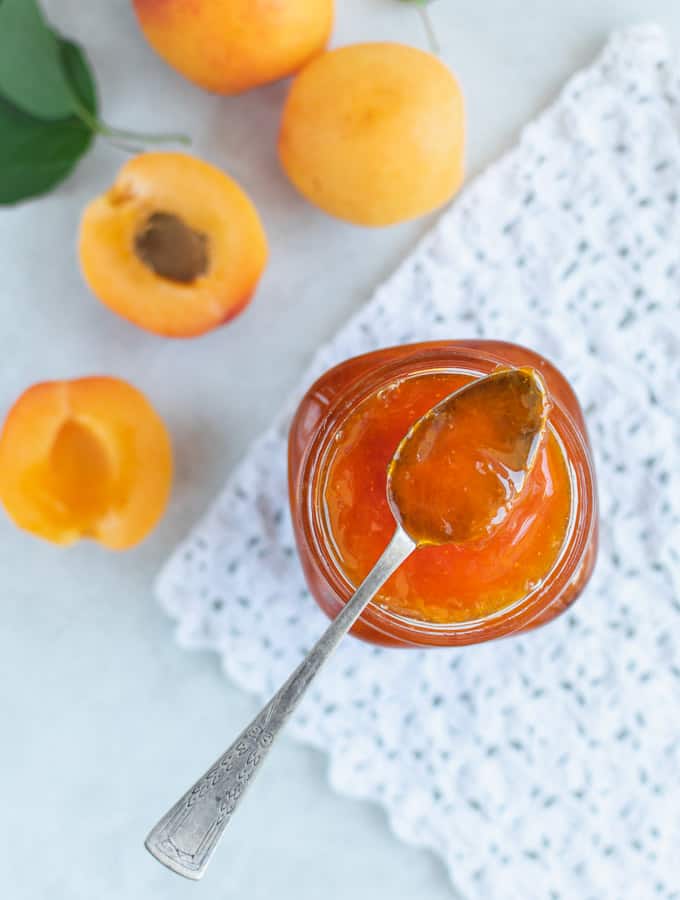
Although I'm not a fan of jam, and marmalade, this Apricot jam is one that I actually enjoy eating. For one, because it is made using our own produce, from a tree planted by my great-grandfather (which hasn't been sprayed with pesticides not even once). And for two, I like that natural acidity apricots release (which is also enhanced with a few drops of lemon).
Whenever I'm to make jam it's always going to be in big quantities (like a whole tree of fruits) so they won't go wasted. Which, by the way, is why jams where invented in the first place.
Well, the most frustrating thing with jam making is that you have to constantly keep an eye on the pot until the jam thickens. So that it won't stick to the bottom.
This takes too long. Because the fruit keeps releasing its juices, therefore, not letting the sugar getting to that caramelized stage that is needed to thicken the jam. So, I've been thinking what if I caramelize the sugar first, by making a thick syrup and then toss in the fruit? And you know what? It ended up being the most stress-free jam I ever made.
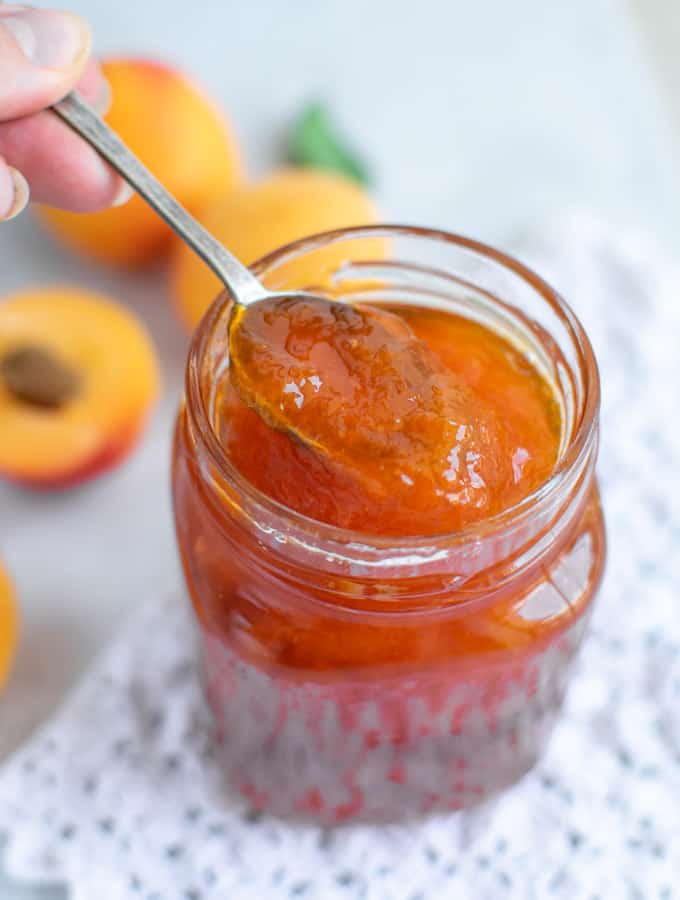
How To Use Natural Pectin To Thicken The Jam
Also, to help thicken the jam more quickly I used pectin. Not the store-bought stuff (which I have never used by the way), but the natural pectin that gets released from the apricot kernels. Yes, pectin is found naturally in citrus fruit seeds. So instead of just throwing the seeds away, use them to thicken the jam.
How? By simply boiling them in the syrup, letting them release the pectin, and then remove them and add the fruit.
And did you know that pectin is actually really healthy? It's a favorite food for your healthy gut bacteria and also impacts blood cholesterol levels and helps regulate blood glucose levels.
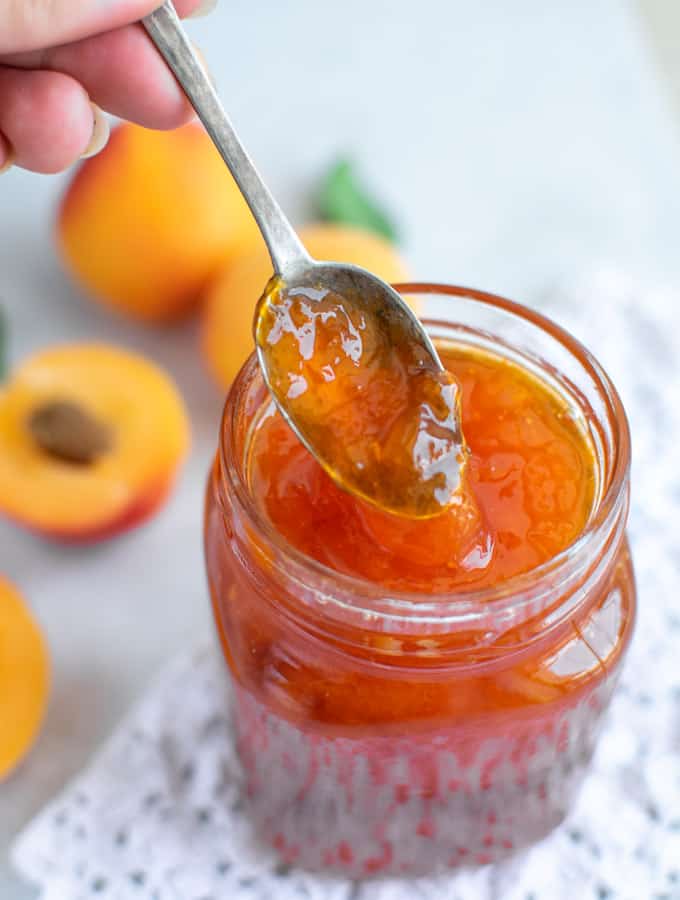
Uses For Apricot Jam
Other than a delicious bread spread this apricot jam is great inside a tart, or jam-filled cookies, and my personal favorite? As a topping over Greek yogurt!
Recipe
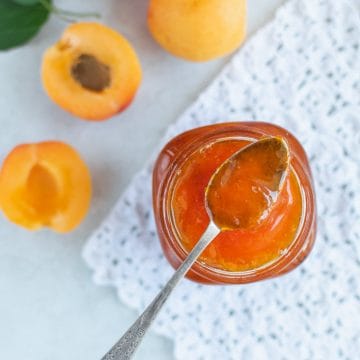
Homemade Apricot Jam With Natural Pectin
Ingredients
- 1 kg / 2 lb + 3 oz apricots rinsed, drained, and cut in 4 (kernels removed and kept aside)
- 700 grams / 1 lb + 8.6 oz sugar
- canning jars
- ⅓ teaspoon freshly squeezed lemon juice
Instructions
- Prepare the jars by washing them well with soap and water. Without letting them dry, place them on a pan that you have covered with a clean tea towel. Then place the pan in a preheated 160°C /320°F oven for 15 minutes.
- In a large cooking pot (if you own a non-stick one the better), add the sugar along with 350 ml of water.
- Bring to a boil over high heat and add the apricot kernels.
- Reduce heat to medium-low and simmer uncovered for about 15 minutes until you get a really thick syrup. Its temperature should read 120°C /248°F on an instant-read thermometer.
- Using a slotted spoon, remove and discard the apricot kernels.
- Carefully add the apricots into the syrup and raise the temperature to medium. Cook for about 50 minutes or so. Skim off the foam that will rise on the surface. Stir every now and then using a flat wooden spoon to make sure the jam doesn't stick at the bottom and keep an eye towards the end in case this starts to happen, then drop the temperature to low. The jam will be ready when big sticky bubbles form on the sides of the pot. 5 minutes before you take the jam off the heat, add the lemon juice.
- Remove the pot from the heat, and using a large spoon, add the hot jam in the sterilized jars. Leave enough space so the jam doesn't come into contact with the lid. Turn the jars upside down so they sit on their lid and leave them like that for 1 hour. This way they airlock. You may then store the jars in a dark place like your kitchen cupboard for up to a year. If you're planning on storing the jam in the fridge, there is no need to sterilize the jars. A good rinse with soap and water will suffice.
Nutrition
YOU MAY ALSO LIKE...




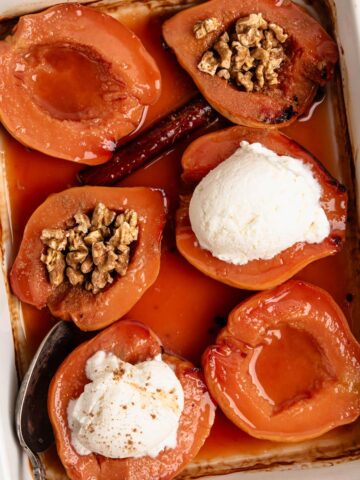
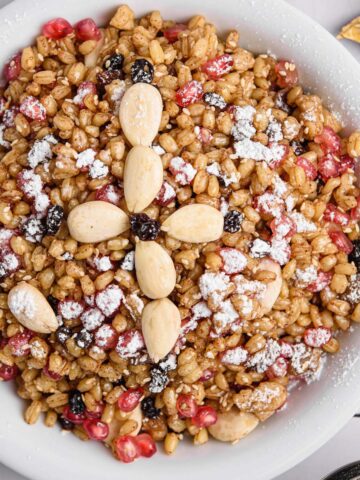
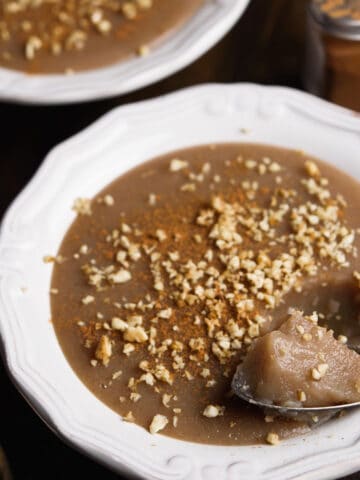
Leave a Reply